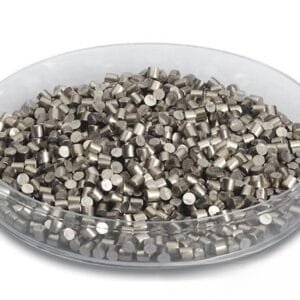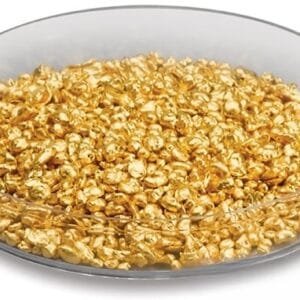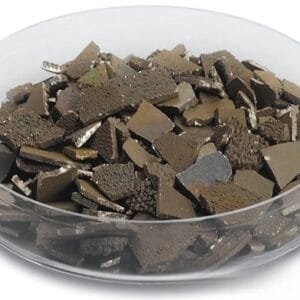| Material Type | Mercury Sulfide |
| Symbol | HgS |
| Color/Appearance | |
| Melting Point (°C) | 584 |
| Theoretical Density (g/cc) | 8.1 |
| Z Ratio | – |
| E-Beam | – |
| Thermal Evaporation Techniques | Boat: – Crucible: Al2O3 |
| E-Beam Crucible Liner Material | – |
| Temp. (°C) for Given Vap. Press. (Torr) | 10-4: 250 |
| Comments | Decomposes. |
Mercury Sulfide Pellet Evaporation Material
TFM offers high-purity Mercury Sulfide Pellet Evaporation Material, designed for thin-film deposition in infrared detection, optoelectronics, and semiconductor applications. Composed of mercury (Hg) and sulfur (S), this material exhibits unique semiconducting properties, strong infrared absorption, and excellent stability, making it ideal for infrared sensors, photoelectronic devices, and optical coatings.
Optimized for thermal evaporation and electron beam (E-beam) evaporation, Mercury Sulfide Pellet Evaporation Material provides precise film uniformity, strong adhesion, and high purity, ensuring reliable performance in advanced thin-film applications.
Key Features and Advantages
Superior Infrared Absorption: Ideal for long-wavelength and mid-wavelength infrared (LWIR & MWIR) detectors.
Tunable Bandgap & High Carrier Mobility: Supports infrared optoelectronics, quantum computing, and photonic applications.
High Purity & Low Contamination: Ensures uniform thin-film growth for improved device efficiency and longevity.
Excellent Chemical & Thermal Stability: Maintains structural integrity under vacuum deposition conditions for consistent thin-film performance.
Customizable Stoichiometry: Available in various Hg-S compositions to meet specific research and industrial needs.
Applications
Infrared Imaging & Thermal Detection: Used in IR cameras, night vision, and thermal sensors for defense, aerospace, and industrial applications.
Optoelectronic & Photodetector Devices: Plays a crucial role in photoelectric conversion, infrared communication, and high-resolution imaging.
Semiconductor & Quantum Research: Supports quantum dot technology, topological insulators, and nanoelectronics.
Thin-Film Coatings for Optical Systems: Ideal for precision optical coatings in photonic and IR detection devices.
Industry Impact and Customization
TFM’s Mercury Sulfide Pellet Evaporation Material is engineered to support cutting-edge infrared detection, optoelectronics, and semiconductor innovations. With customizable compositions and precision manufacturing, we ensure high-quality thin-film deposition, excellent stoichiometry control, and superior performance for next-generation infrared and photonic technologies.
With its exceptional electronic, optical, and infrared-responsive properties, TFM’s Mercury Sulfide Pellet Evaporation Material is a vital material for high-performance infrared imaging, optoelectronic applications, and advanced semiconductor research, delivering enhanced efficiency and long-term reliability.


 MSDS File
MSDS File



Reviews
There are no reviews yet.